Explore Aizuwakamatsu - Japan Travel, Asia
Aizuwakamatsu, located in the center of Fukushima Prefecture, is a city that perfectly combines samurai heritage, natural beauty, and rich culture. Aizuwakamatsu, also known as the "Samurai City," provides visitors with a deep dive into Japan's feudal past through well-preserved castles, historical landmarks, and museums that recount the tale of the Aizu Clan and its significant role in Japanese history.
Population: Approximately 120,000 in 2020.
Economy: Aizuwakamatsu’s economy is driven by tourism, traditional crafts like lacquerware, sake production, and agriculture, particularly rice farming. The city also supports small local businesses and artisans.
Landmarks: Famous for the Tsuruga Castle (or Aizu-Wakamatsu Castle), Iimoriyama Hill & Byakkotai Memorial, and the Ouchi-juku Post Town.
Japan
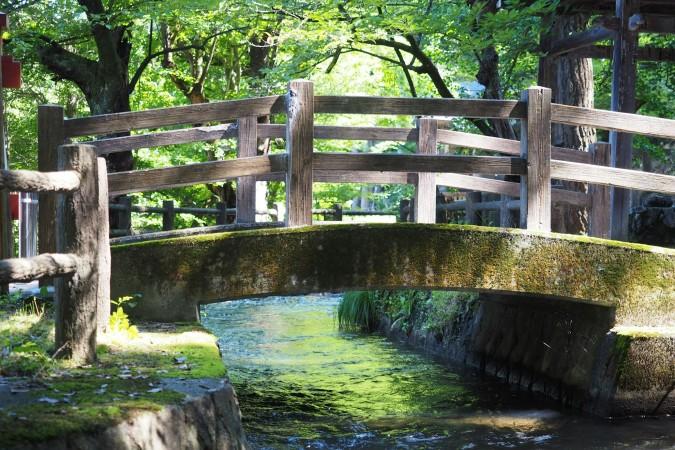
Overview of Aizuwakamatsu
Historical & Cultural Influence
Aizuwakamatsu is rich in historical significance, especially linked to samurai culture. Its most iconic landmark is Tsuruga Castle, a grand structure that played a pivotal role during the Boshin War of 1868, a civil war that shaped modern Japan. Today, Tsuruga Castle stands as a symbol of the city’s resilience and rich history. In addition to taking in sweeping views of the city from the top of the castle, visitors can peruse the museum and learn about the Aizu Samurai who formerly protected the area. Walking through this city feels like stepping into a different era, making it a popular destination for history enthusiasts.
Interaction with the Locals
Aizuwakamatsu's citizens are known for their strong sense of pride in their samurai heritage and deep-rooted cultural traditions. The people of Aizuwakamatsu are friendly and welcoming, often eager to share their local customs with visitors. Despite its historical significance, the city maintains a peaceful, small-town atmosphere, where locals are closely connected to the area's history, from traditional crafts like Aizu lacquerware to its famous sake brewing.
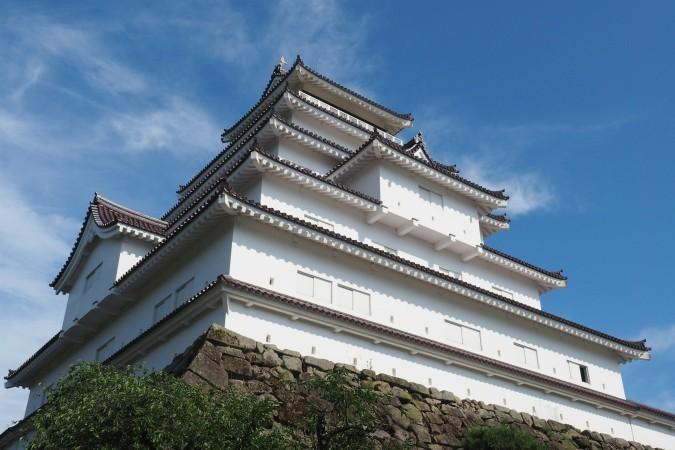
Tsuruga Castle (Aizu-Wakamatsu Castle) - © Shino Nakamura
Top Attractions in Aizuwakamatsu
Aizuwakamatsu offers a wealth of attractions that allow travelers to immerse themselves in Japan’s history, culture, and natural beauty. Whether you're exploring grand castles, historical villages, or scenic landscapes, the city has something for everyone.
Tsuruga Castle (Aizu-Wakamatsu Castle)
Tsuruga Castle, also known as Aizu-Wakamatsu Castle, is the crown jewel of the city. Originally built in the late 14th century, this iconic structure played a pivotal role in the Boshin War, a civil war that marked the end of the samurai era. Today, Tsuruga Castle serves as a museum that showcases the history of the Aizu Clan and their contributions to Japan’s feudal period.
Iimoriyama Hill and Byakkotai Memorial
Iimoriyama Hill is both a scenic and somber site in Aizuwakamatsu. It’s famous for the Byakkotai (White Tiger Corps), a group of 20 teenage samurai who tragically took their own lives during the Boshin War, believing their beloved Aizu had fallen. A visit to the Byakkotai Memorial allows travelers to reflect on the loyalty and bravery of these young warriors, who are remembered as heroes in Japanese history.
Ouchi-juku Post Town
A short drive from Aizuwakamatsu city center, Ouchi-juku is a beautifully preserved post town that dates back to the Edo period. Walking through its main street lined with traditional thatched-roof houses, you'll feel as if you've stepped back in time to the 17th century. The town is known for its unique culinary offerings, especially negi soba, where soba noodles are served with a long green onion used in place of chopsticks.
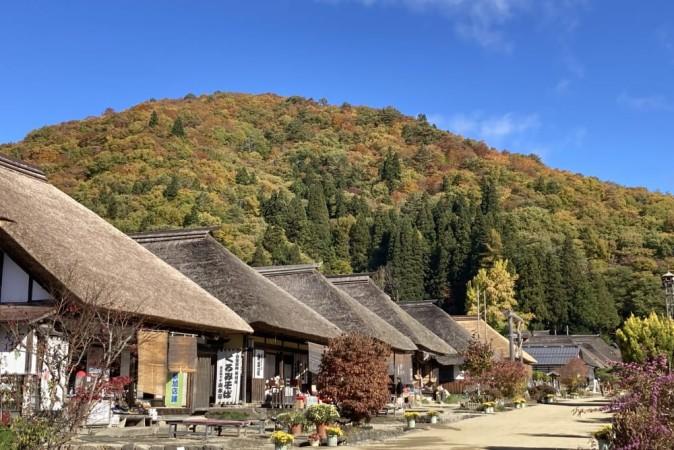
Ouchi-juku Post Town - © Japan National Tourism Organization
Must-Try Dishes in Aizuwakamatsu
Aizuwakamatsu is a hidden gem for food lovers, offering a variety of dishes that highlight the region’s culinary traditions, the use of local ingredients and the unique flavors you’ll only find in the Fukushima region.
- Kozuyu: Kozuyu is a clear soup that holds a special place in Aizu’s culinary culture that is served at celebrations and during the New Year. Kozuyu is made from a broth of dried scallops, shiitake mushrooms, carrots, taro, and other vegetables yet its umami-rich flavor is a symbol of Aizu's simplicity.
- Wappa Meshi: Wappa Meshi is a traditional Aizu cuisine of steamed rice topped with seasonal vegetables, mushrooms, and fish, served in a round wooden container known as a "wappa." The cedar container gives the food a lovely scent, which enhances the flavors.
- Aizu Sake: The area’s clean mountain water and cold winters provide the perfect conditions for brewing high-quality sake. Many local breweries offer tours and tastings, allowing visitors to sample a wide variety of flavors, from dry and crisp to sweet and fragrant.
- Nishin Soba: Nishin Soba, a soba noodle dish prepared with dried herring rehydrated and simmered in a sweet soy sauce broth, is another local favorite. The herring's deep taste complements the soba noodles, resulting in a dish that is both robust and delicate.
- Aizu Sweets: Aizu has its own unique array of traditional sweets, Awa Manju and Aizu Miso Manju. Awa Manju is a steamed bun filled with red bean paste and covered with millet, which has a somewhat chewy feel while Aizu Miso Manju is another sweet treat, made from a soft bun filled with sweetened miso paste, combining savory and sweet flavors for a distinct dessert experience.
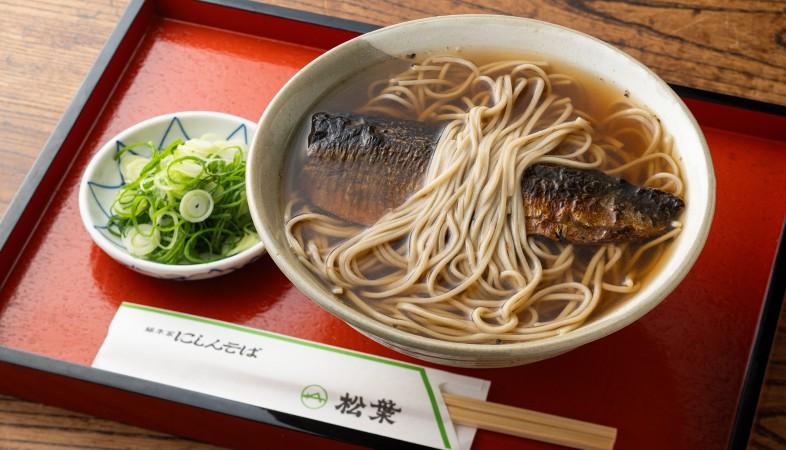
Nishin Soba - © 京都市中央市場仲卸業者オススメ
Festivals & Local Celebrations
Aizuwakamatsu is a city that loves to celebrate its history and culture, with numerous festivals held throughout the year. These events offer a fantastic opportunity for visitors to experience the city’s vibrant traditions and local customs, from historical reenactments to festive celebrations of the seasons.
Aizu Autumn Festival
The Aizu Autumn Festival is a big event conducted in September to highlight the city's samurai past. The highlight of the festival is the Samurai Parade, where hundreds of participants dressed in traditional armor march through the streets, reenacting famous battles and moments from Aizu’s history. The festival also includes food stalls, traditional dance performances, and a spectacular fireworks display.
Ouchi-juku Snow Festival
Taking place in February, the Ouchi-juku Snow Festival transforms the old post town into a winter wonderland as the thatched-roof houses of Ouchi-juku are covered in snow, illuminated by lanterns, creating a magical atmosphere. The festival features traditional performances, fireworks, and local food stalls offering hot, comforting dishes like negisoba.
Tsuruga Castle Cherry Blossom Festival
Spring in Aizuwakamatsu is marked by the Tsuruga Castle Cherry Blossom Festival, where the castle grounds come alive with the beauty of sakura (cherry blossoms). Visitors gather to enjoy hanami (flower viewing), with picnics under the blooming trees. The festival also features traditional music and performances, as well as night-time illuminations of the cherry blossoms, creating a romantic and serene ambiance.
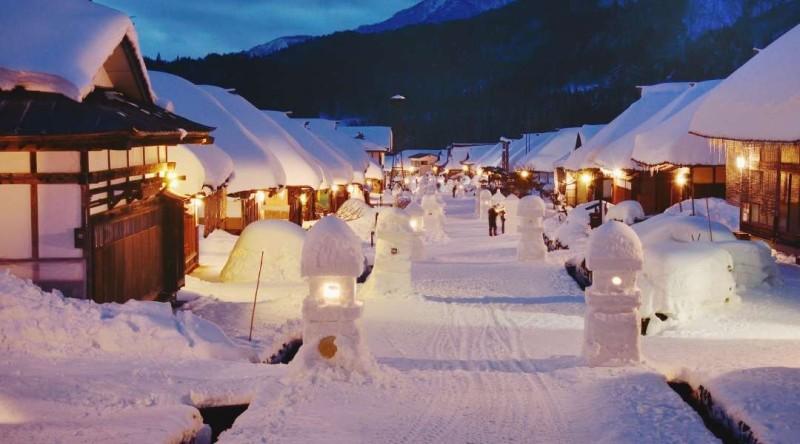
Ouchi-juku Snow Festival - © Japan National Tourism Organization
What to Do in Aizuwakamatsu
- Onsen Retreat at Higashiyama Onsen: Nestled in a scenic valley, Higashiyama Onsen has been a popular onsen destination for centuries. Many traditional Japanese inns feature outdoor baths with views of the surrounding mountains and rivers. The mineral-rich waters are perfect for soothing tired muscles after a day of sightseeing.
- Outdoor Adventures: Aizuwakamatsu is surrounded by beautiful natural landscapes that offer plenty of outdoor activities. In the warmer months, visitors can enjoy hiking in the nearby mountains or taking sightseeing boat rides on Lake Inawashiro, one of Japan’s largest lakes. In winter, the region offers skiing opportunities at resorts near Aizu, making it a great destination for both summer and winter activities.
- Cultural Tours: For a deeper understanding of Aizuwakamatsu’s rich history, consider joining a guided cultural tour. These tours take you through the city’s most important historical sites, such as Tsuruga Castle, Aizu Bukeyashiki, and Iimoriyama Hill, with knowledgeable guides sharing insights into the city’s samurai past.
Shopping in Aizuwakamatsu
- Aizu Lacquerware Stores: One of Aizuwakamatsu’s most famous crafts is Aizu lacquerware, known for its durability and intricate designs. The lacquerware is often decorated with gold leaf and features motifs inspired by nature and samurai symbols. Many local shops and workshops in the city offer a range of lacquerware products, including dishes, trays, and tea sets. Some workshops even offer hands-on experiences, where visitors can try their hand at painting their own lacquerware pieces.
- Nanokamachi-dori Street: For a traditional shopping experience, head to Nanokamachi-dori, a charming street lined with historical buildings and artisan shops. Here, you’ll find a wide variety of goods, from pottery and woodwork to traditional textiles. The street’s nostalgic atmosphere makes it a pleasant place to stroll, and shopkeepers are often happy to share the stories behind their products.
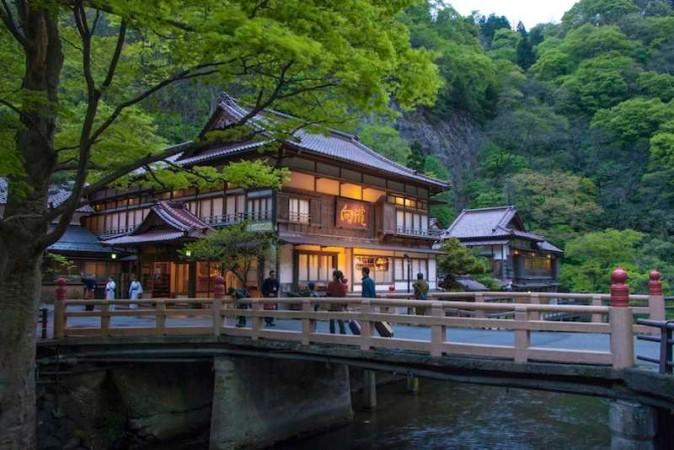
Onsen Retreat at Higashiyama Onsen - © Japan National Tourism Organization
Weather in Aizuwakamatsu: Best Time to Visit
Spring in Aizuwakamatsu
Spring in Aizuwakamatsu is a delightful time to visit, with mild temperatures and vibrant cherry blossoms. March can still be a bit chilly, but by April, the city is in full bloom, especially around Tsuruga Castle, where the Cherry Blossom Festival takes place. Daytime temperatures range between 10°C and 20°C (50°F to 68°F), making it ideal for outdoor activities such as tourism and hanami (flower watching).
Summer in Aizuwakamatsu
Summer brings warm weather and lush greenery to Aizuwakamatsu. With temperatures ranging from 20°C to 30°C (68°F to 86°F), this is the ideal time for hiking, exploring Lake Inawashiro, or enjoying a boat tour. Though summer is generally pleasant, July and August may see some rainy days, so it’s wise to pack an umbrella if you visit during this period.
Autumn in Aizuwakamatsu
Autumn is arguably one of the most beautiful times to visit Aizuwakamatsu as the city’s parks, temples, and mountains come alive with stunning autumn foliage. The crisp, cool air (ranging from 10°C to 20°C or 50°F to 68°F) makes it comfortable to explore attractions like Iimoriyama Hill and Ouchi-juku. The Aizu Autumn Festival, held in September, also adds a festive atmosphere to the city.
Winter in Aizuwakamatsu
Winter in Aizuwakamatsu is cold and snowy, with temperatures often dropping below freezing. The city’s surrounding mountains are ideal for skiing and snowboarding, while Ouchi-juku becomes a snow-covered fairytale during the Ouchi-juku Snow Festival. This is also the perfect time to soak in a warm onsen at Higashiyama Onsen. If you enjoy winter sports or scenic snowy landscapes, this is a magical time to visit.
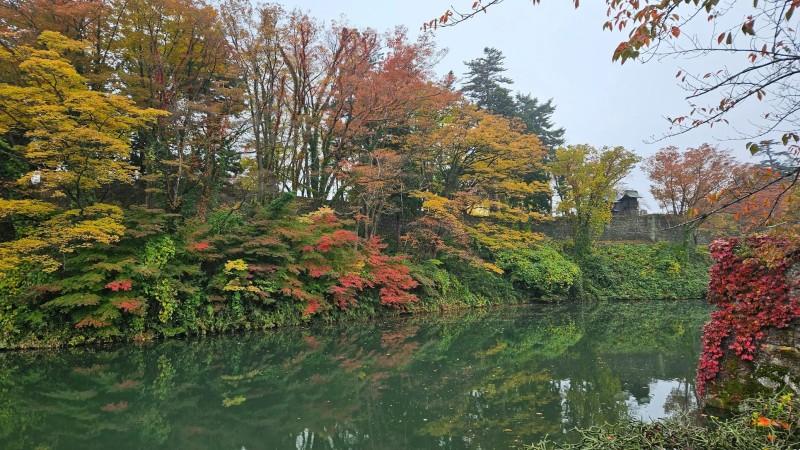
Witness Aizuwakamatsu's natural beauty - © Chuck Eugene
Essential Travel Information
Getting Around Aizuwakamatsu
- Local Buses: Aizuwakamatsu operates a reliable local bus network that connects the city’s major attractions. These buses typically run at regular intervals throughout the day, making it easy to hop on and off as you explore. Many routes are designed with tourists in mind, stopping at key historical and cultural sites, making them a convenient option for sightseeing.
- Taxis: Taxis are widely available in Aizuwakamatsu, especially near transportation hubs, hotels, and major attractions. Taxis are a convenient choice for those looking for a quicker or more private mode of transport. While taxis can be more expensive than other options, drivers are generally familiar with the city’s landmarks, making it easy to reach your destination.
- Bicycle Rentals: Biking is a great way to enjoy the scenic beauty of the city, with several bike-friendly routes that lead through historical sites and natural landscapes. It’s a sustainable and fun way to navigate the city, allowing you to stop and explore at your own pace.
- Walking: Aizuwakamatsu is a walkable city, especially within the downtown area and around Tsuruga Castle. Walking between attractions is not only convenient but also gives you the opportunity to explore local shops, cafes, and hidden gems along the way.
ATM & Banking Services
In Aizuwakamatsu, ATMs that accept international cards are readily available at convenience stores and post offices, making it easy for visitors to access cash. While some local businesses accept credit cards, it’s a good idea to carry cash, especially when visiting smaller shops or rural areas. Currency exchange services are limited, so exchanging money before arriving or at major transport hubs is recommended.
Where to Stay in Aizuwakamatsu
- Ryokan: For an authentic Japanese experience, staying in a ryokan is a must. These traditional Japanese inns feature tatami mat rooms, futons, and onsen baths, offering a glimpse into Japanese hospitality and culture. Many ryokan in Aizuwakamatsu serve multi-course kaiseki meals that highlight local ingredients and flavors.
- Western-Style Hotels: These accommodations offer amenities like Wi-Fi, comfortable beds, and on-site restaurants serving both Japanese and Western cuisine. Western-style hotels are often conveniently located near transportation hubs, making them ideal for travelers who want easy access to the city's main attractions and public transport.
- Budget Lodgings: If you’re traveling on a budget, guesthouses and hostels provide affordable accommodation options without sacrificing comfort. Guests can often stay in traditional tatami mat rooms, and communal dining areas provide opportunities to interact with other travelers. These budget-friendly options are ideal for those looking to immerse themselves in the local culture while saving on accommodation costs.
Des articles pour vous

Explore Fukushima - Japan Travel, Asia
Nestled in Japan's scenic Tohoku region, Fukushima offers travelers a unique blend of historical charm, cultural richness, and natural beauty. Known for its stunning landscapes and welcoming communities, Fukushima is an excellent destination for those seeking an authentic Japanese experience beyond the bustling metropolises. Renowned for its diverse attractions, from ancient castles and hot springs to vibrant festivals and picturesque countryside, Fukushima offers a great opportunity for cultural and historical exploration for anyone who loves Japanese culture.
Population: Approximately 1.8 million in 2023.
Economy: Specializing in the seafood and fishing industries, Fukushima, with its historical impacts, now continues to thrive as one of the most developed and largest economies in Japan.
Landmarks: Famous for Aizu-Wakamatsu Castle, Fukushima City Historical Museum, and Ouchi-juku.

La symphonie saisonnière de l'Inde : Révéler les meilleurs moments pour explorer le sous-continent
Les traditions anciennes dansent avec les merveilles modernes dans une terre où les épices et l'encens embaument l'air, et chaque recoin cache une histoire prête à être découverte. L'Inde, vaste et diverse, se déploie comme un monde miniature en soi. Mais quand devriez-vous entreprendre ce voyage épique ? Rejoignez-nous pour un tourbillon à travers la tapisserie saisonnière de l'Inde et trouvez le moment parfait pour votre aventure.

Voyage culinaire à travers la Chine : Savourez les saveurs diversifiées
Des rives subtropicales de Canton aux steppes balayées par le vent du Xinjiang, le vaste paysage de la Chine est une tapisserie de saveurs, chaque région mettant en avant ses propres trésors culinaires. Avec plus de 2000 miles séparant les palais de dim sum du sud des étals de kebabs du nord-ouest, et des woks crépitants entre les deux, la diversité gastronomique de la Chine est véritablement inégalée. Alors, prenez vos baguettes et embarquez pour une aventure gourmande à travers les plats les plus délicieux du Royaume du Milieu !

Vivez l'expérience à bord du RV Indochine II - Une croisière sur le Mékong
Le RV Indochine II est un navire de croisière fluviale de luxe, offrant un voyage inoubliable à travers de nombreuses attractions le long du fleuve Mékong. Construit en 2017, ce vaisseau haut de gamme allie élégance coloniale et commodités modernes pour créer un environnement à la fois confortable et élégant pour son équipage et ses passagers. La taille intime du navire en fait le choix idéal pour ceux qui recherchent une expérience de croisière plus personnelle tout en explorant la culture, les paysages et le patrimoine riches du Vietnam et du Cambodge. Que vous admiriez le paysage depuis votre balcon privé ou que vous dégustiez une cuisine locale authentique, le RV Indochine II promet une aventure exotique hors du commun.

Assistez à la pêche sur pilotis au Sri Lanka
Le Sri Lanka, réputé pour ses plages magnifiques et son riche patrimoine culturel, abrite une tradition unique qui captive les voyageurs depuis des siècles : la pêche sur pilotis. Cette pratique ancienne, transmise de génération en génération au sein des communautés côtières, allie art et nécessité, offrant un aperçu d'un mode de vie intimement lié aux rythmes côtiers de l'île. La pêche sur pilotis au Sri Lanka n'est pas simplement un moyen de capturer des poissons ; c'est un emblème culturel, incarnant la résilience et l'ingéniosité des communautés de pêcheurs sri-lankaises.

À l'assaut des sommets : guide du randonneur de l'Himalaya
Lorsque les premiers rayons du soleil teintent les sommets enneigés de doré et de rose, vous êtes au seuil de l'aventure. Bienvenue dans l'Himalaya, où chaque pas est une immersion dans le plus grand spectacle de la nature. Avec Tweet World Travel comme guide, préparez-vous à un trek d’aventures, qui éveillera vos sens et vous transformera à jamais.
